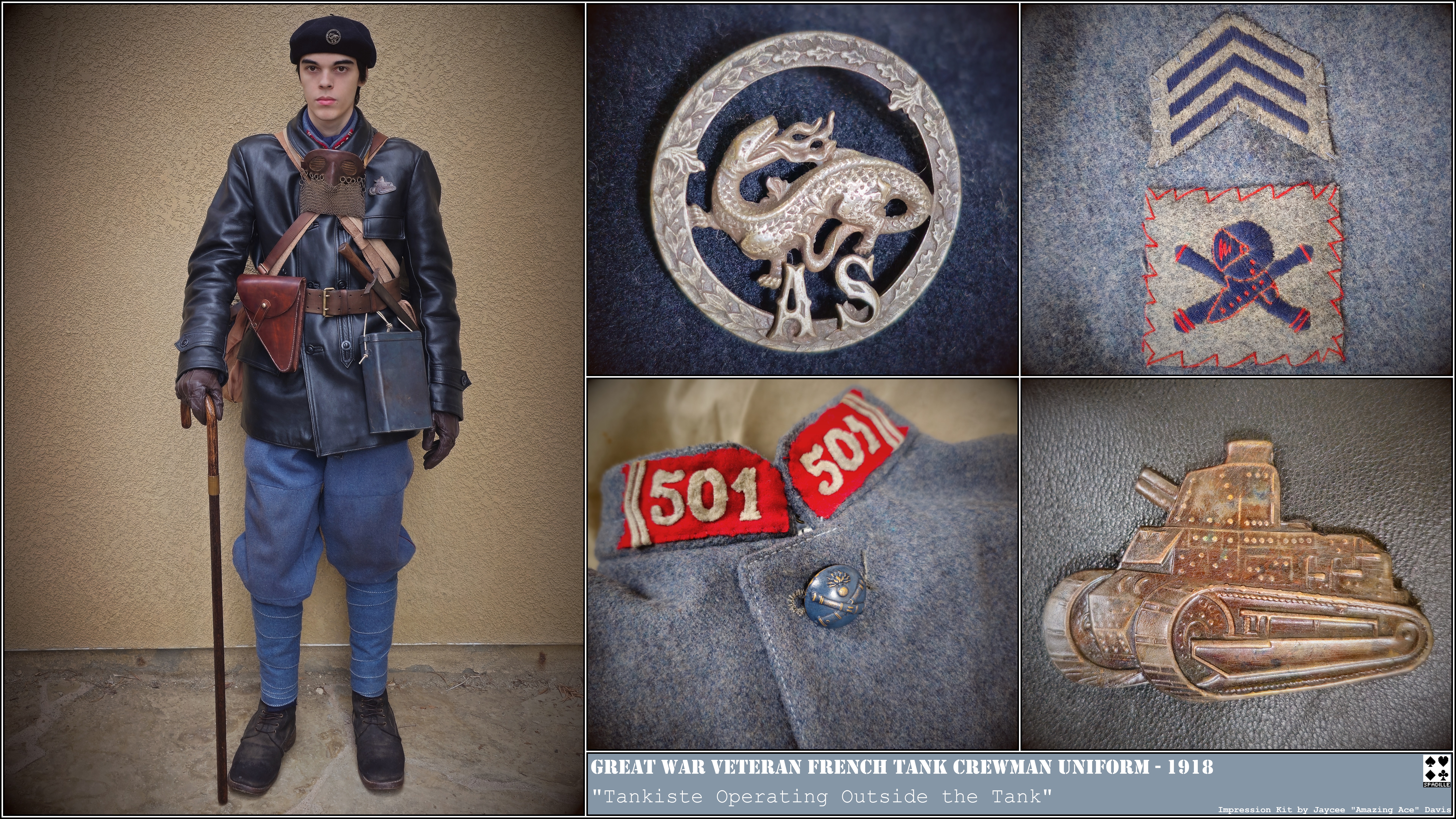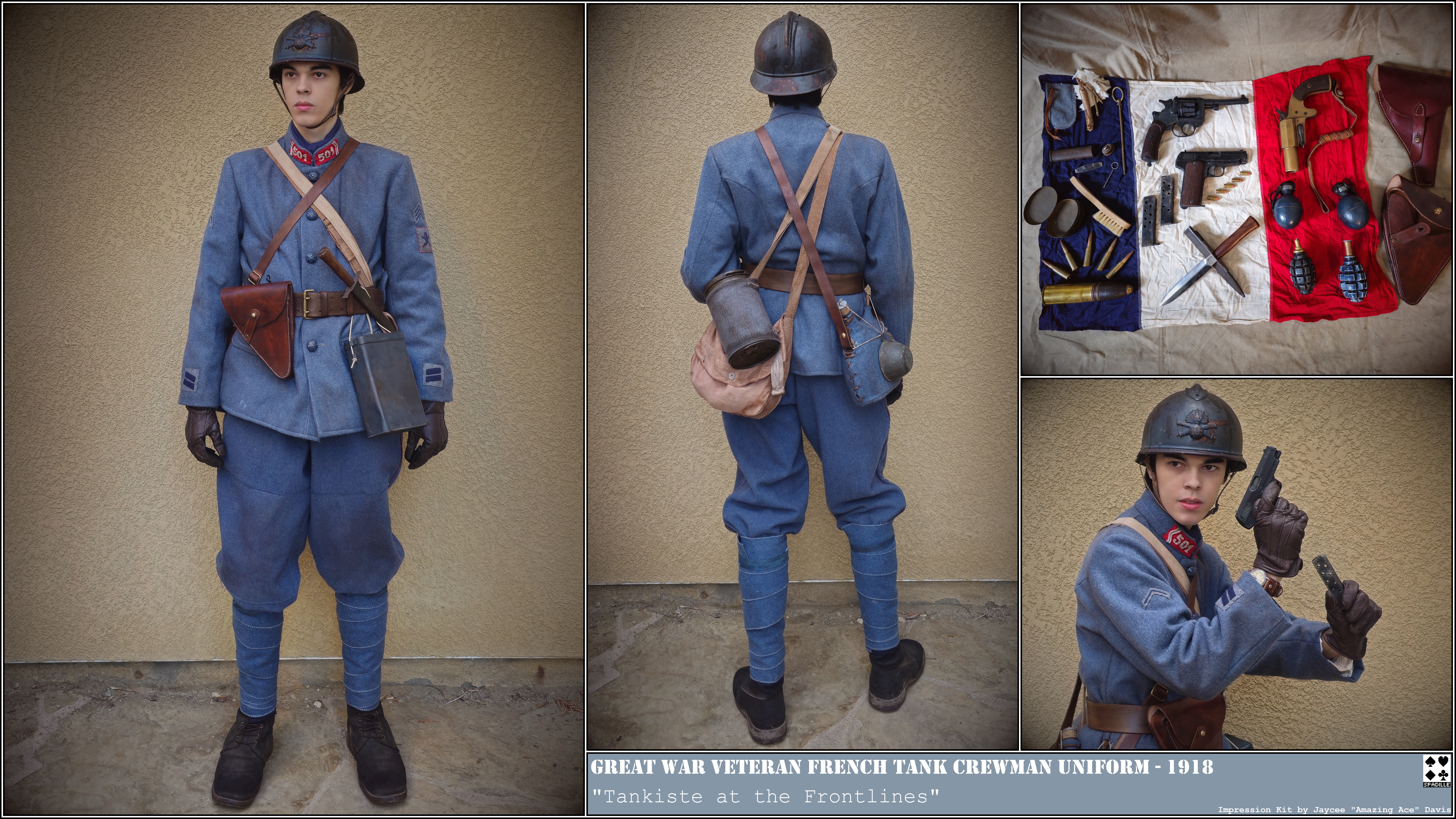HOME | DD
 Amazing--Ace — Tankiste Operating Outside the Tank
by-nd
Amazing--Ace — Tankiste Operating Outside the Tank
by-nd

#history #larp #reenacting #reenactor #uniform #uniforms #worldwarone #reenactment #ww1
Published: 2024-02-01 00:17:46 +0000 UTC; Views: 1007; Favourites: 6; Downloads: 1
Redirect to original
Description
This is an impression of a French tank crewman operating outside their tank. One may see this uniform on tank commanders marching in front of their tank with cane in hand during road marches and on other crew members behind the lines. The marching cane was particularly useful within the Artillerie Spéciale as tank commanders used it to judge the softness of the terrain the tank is moving over. Often one can tell which tankiste was the commander of the crew as they may be walking beside the tank nonchalantly with their marching cane.Being outside the tank, the tankiste may be seen wearing their 2-liter Bidon Modèle 1877 modifié 1915 (canteen) and Étui-Musette Modèle 1892. Despite being one of the larger examples of a liquid container during the Great War, these canteens would most likely have wine or coffee inside them instead of water as the French struggled with providing clean drinking water to the troops for nearly the entirety of the war. The tankiste per regulation were issued two canteens, though usually only one was worn as pictured with the other stored elsewhere. The secondary canteen may also be in the form of the earlier 1-liter Bidon Modèle 1877. Both canteens would usually have different liquids in them.
The first cloth headgear issued to the tankiste was the standard infantry horizon blue wool Bonnet de Police Modèle 1918 service cap with its Napoleonic style of two tall peaks on each end. When performing vehicle maintenance, this service cap would sometimes fall off the head and get stuck in the small confines of the tank, becoming visibly dirty. Because of this, tankiste would purchase black civilian Basque style berets to replace their service cap, becoming commonplace by 1917. The berets seen being worn by the tankiste were all civilian berets purchased by the tankiste themselves and were not regulatory, varying in size and style. The black beret was well liked among the crews as it fit snugly on the head and would not fall off while inside the tank. Just to be safe many of the tankiste would wear the beret in an interesting fashion - centered and pushed snug down over the head to ensure it would not fall off. Wearing the beret like this appears to be some sort of inside fashion joke among Veteran tank crews, as this method of wearing the beret would continue after the war despite proper beret wearing regulations in place by then. Like the black leather coat, the black beret was chosen as it masked any vehicle oil stains the beret may collect when in use.
The beret would soon be adorned with various metallic or embroidered insignias such as rank stripes, badges, playing card symbols, and other miscellaneous AS pins. In the case of the tankiste here, he wears an NCO version of the original insignia of the Artillerie Spéciale, depicting a mythical fire breathing salamander. The NCO versions were in silver while the Officer versions were in gold. While not technically within regulation, the wearing of such insignias and unit markings was ignored by the AS administration as it promoted esprit de corps. The black leather coat was not immune to this adorning of insignia, and we can see here that a private purchase Renault FT pin has been placed on the left breast of the coat. Like the AS specialist insignia tab on the tunic, this pin is intended to show others that the wearer was a tank crewman when wearing the coat. This was less common to see but many of the enthusiastic and eager fighters within the AS would sport pins like these. Unlike the French infantry which were characterized as the rugged and reluctant warfighter Poilu, the tankiste remained in a high morale and eager to fight state throughout their service during the war - a side effect of incorporating many officers who previously served within other 'proudly elite' units like the cavalry.
Additionally we see a closer view of the regimental collar tabs and left arm service and insignia tabs. The buttons on the Vareuse Modèle 1915 were of course standard artillery buttons with a flaming bomb over two crossed cannons.
























